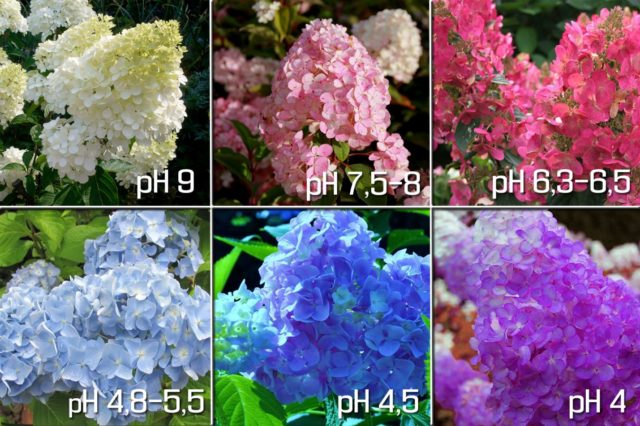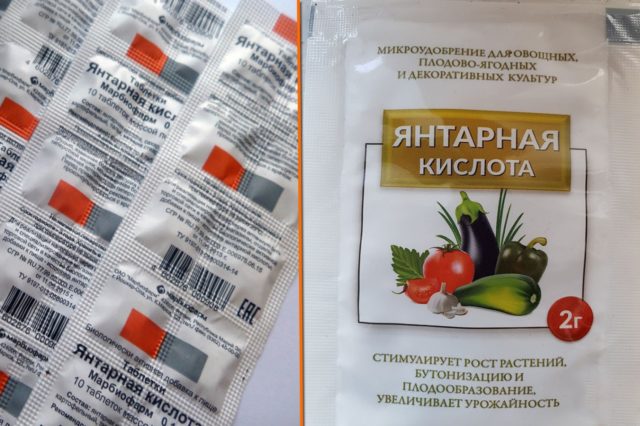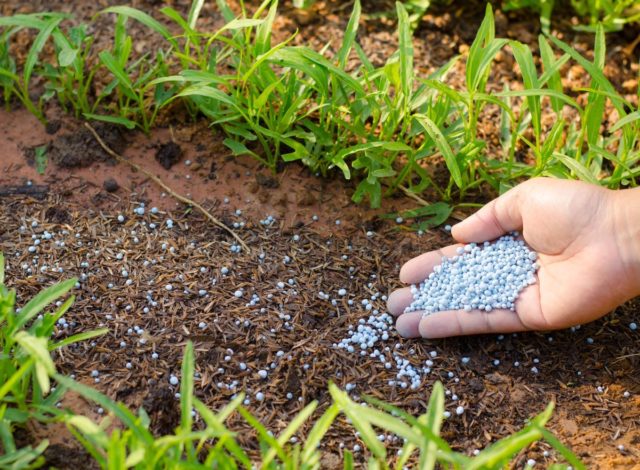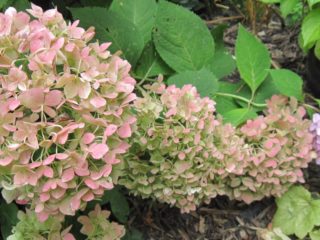Content
It is necessary to acidify the soil for hydrangea if the measuring device shows an increased alkali content. Before applying special products, you need to find out why the flower loves acidic soil, as well as consider several ways to lower the pH level and choose the most suitable one.
Why hydrangea loves acidic soil
Plants that like soil with high acidity are called acidophytes. These include hydrangea. In nature, its natural environment is moist land near water bodies, rich in peat and with an acid content of about pH 5.3.
The reason why hydrangea grows better in acidic soil is the special structure of the roots. Most plants have microscopic suction channels through which they absorb nutrients and water. Hydrangeas and other acidophytes do not have such channels. Instead, mycelium develops, thanks to which the plant receives nutrition from aggressive soil, which is the earth with an acidity level of pH 3.5-7. The plant and these fungi cannot exist separately from each other. They are a symbiosis that can only live in an acidic environment.
What soil acidity should be for hydrangea
Before planting a hydrangea, you need to measure the acidity of the soil on the site. This is done using a special device or folk remedies. The unit of measurement is called pH. The table in the photo below shows the parameters of different types of soil:

The more intense the color of the strip, the more pronounced the acidic or alkaline properties of the earth.
Hydrangea blooms well and develops correctly when the acidity of the soil is 5.5 pH. The inflorescences on the bush become lush, and their color is bright. It is by the shade of the petals that experienced gardeners notice when it is necessary to increase the acidity of the soil, because if the earth is acidified artificially, then as it grows, the bushes absorb all the nutrients.
The frequency with which the acidification procedure must be repeated depends on the initial pH of the soil. Neutral and slightly alkaline earth needs to be acidified 2-3 times per season, and slightly acidic - 1-2 times. Strongly acidic soil from 1 to 3 pH, on the contrary, is deoxidized with wood ash.
How to determine the pH level by the shade of hydrangea flowers:
- On neutral soil, the flowers turn white or have a slight blue tint.
- Pink color indicates an acidity level of 7.5-8 pH.
- The bright pink color of the petals indicates that the acidity level is around 6.3-6.5 pH.
- Blue, inflorescences become when the pH is 4.8-5.5.
- The petals acquire a blue tint at an acidity of 4.5 pH.
- Purple flowers can be seen when the acidity of the soil is 4 pH.

Inflorescence shades differ at different pH levels
These changes are not relevant for plants in which the color of the petals should have 1 shade from nature. For example, there are pure white inflorescences, and they do not change them throughout the entire flowering period.
How can you acidify the soil for hydrangea
Before planting hydrangeas in open ground, gardeners fertilize the ground with humus from last year's leaves, needles and sawdust. For neutral and alkaline soils, this acidification method is ineffective, so you need to use additional funds.
Acidify the soil during watering. Special agents are dissolved in water:
- Apple vinegar;
- oxalic acid;
- lemon acid;
- electrolyte;
- colloidal sulfur.
One of the most effective remedies is succinic acid (sodium succinate). In addition to acidification, such a solution nourishes the roots well and activates their development. Protects against disease and pest attacks, and also accelerates the regeneration process of the entire bush. If the hydrangea has suffered a disease, then succinic acid will help the plant quickly recover and return to normal. In addition, sodium succinate helps shrubs in the process of photosynthesis and does not accumulate in the soil and oversaturate the plant.

Succinic acid can be purchased in the pharmacy as a tablet or in a flower shop as a powder.
How to make the soil acidic for hydrangeas
Before acidifying the soil, you need to measure the pH level. For this, gardeners acquire a special device, litmus tests, or use the folk method. Sprinkle soda on the ground and, if the soil is strongly acidic or slightly acidic, a chemical reaction will begin. The grains will "bounce" and fly off in different directions. If vinegar is spilled on alkaline earth, it will hiss and bubbles with a little foam will appear.

To better see the reaction, soil samples should be collected in glass or ceramic dishes.
You can acidify the soil for hydrangeas using simple methods, without purchasing special chemicals. The most popular ways to acidify the earth are carried out using:
- vinegar;
- oxalic acid;
- mineral supplements.
How to use these tools correctly is described below.
How to acidify hydrangea soil with vinegar
It is recommended to use vinegar to acidify the soil only in extreme cases, when the plant loses its attractiveness, develops poorly, and its flowers become pale and dry. Frequent use of vinegar for acidification has a detrimental effect on the mycelium in the roots. An excess of acid can completely destroy the plant.
To acidify the soil with vinegar solution, it is best to use apple cider essence. Add a tablespoon of vinegar to 1 bucket of water and stir well. Water the bush with the resulting solution. You can repeat the procedure with this tool no earlier than 3 months later.
How to oxidize the soil for hydrangea with oxalic acid
Oxalic acid is sold in powder form. You will need 100 g of the product for 10 liters of water. For quick dissolution, the liquid can be slightly warmed up so that it is not too cold. Pour the acid in a thin stream and mix thoroughly. One bucket is enough to water the ground under one adult panicle hydrangea bush. You can acidify the soil in this way once every 1.5 months.
How to make the earth for hydrangeas acidic with mineral additives
Experienced gardeners recommend acidifying heavy clay soil with mineral fertilizers. Suitable for this purpose:
- Colloidal sulfur. This agent must be added directly to the ground. Fertilizer is dug under the bush, deepening by 10-15 cm. It is advisable to carry out this procedure in the fall, before the onset of the first frost. In the spring, after the snow melts, the chemicals will begin to react, and after 5-6 months the acid values will drop by 2.5 pH. This acidification method should not be used too often. Enough once every 2 years, otherwise there is a risk of damaging the root system.
- Ferrous sulfate. These fertilizers help to achieve a faster and more gentle effect. Just like sulfur, they are brought into the soil before winter. 10 m2 you need 500 g of the substance.The acidity level decreases by 1 unit in 3 months.
- If the pH level of the earth is slightly different from the norm, then you can use ammonium nitrate, ammonium sulfate or potassium sulfate.

Mineral fertilizers in the form of granules upon contact with water dissolve and saturate the soil with useful microelements
How to acidify the soil can be found in the video:
Useful Tips
For successful soil acidification and good hydrangea growth, experienced gardeners advise:
- Add citric acid to the water for irrigation once a month. For 10 liters, 1 tbsp is required. powder. This method will help maintain the level of acidity in the soil.
- For mulching, it is best to use larch needles.
- Water the seedlings that have recently been transplanted into open ground with a solution of succinic acid. This will help young plants gain vitality.
- When using organic fertilizers to acidify the soil more strongly, it is better to give preference to humus from oak leaves.
- By lowering the pH balance of the earth with nitrate, you cannot use waste material. It increases the content of lead, which contaminates the soil and interferes with the normal growth of hydrangeas.
- After sulfur fertilization for clay soil, you should wait about 8 months before planting the hydrangea, otherwise the plant may not take root in a new place, since the earth will be oversaturated with acid at this time.
- To maintain an optimal acid balance in the earth, green manure can be used. They are also called green fertilizers. When the first shoots appear from the seeds, they are buried. These siderates include oats, white mustard, and lupine.
- Specialty alum for hydrangeas is available in flower shops. They contain heptahydrate of aluminum and potassium salts. These substances acidify the soil and give the flowers a blue tint.
- To change the color of the petals from blue to pink, you need to water the bush with a weak solution of potassium permanganate.
- Sometimes gardeners plant 4-5 bushes next to each other and increase the acidity of the soil only under some of them. Then the flowers take on different shades, and the flower bed with hydrangea plays with new colors.
Conclusion
You can acidify the soil for hydrangeas with home remedies or with ready-made mixtures from the store. The main thing is to check the initial pH level before adding fertilizers or acids. Measurements should be repeated every month and the earth should be acidified if necessary, then the plant will bloom well and develop correctly.








